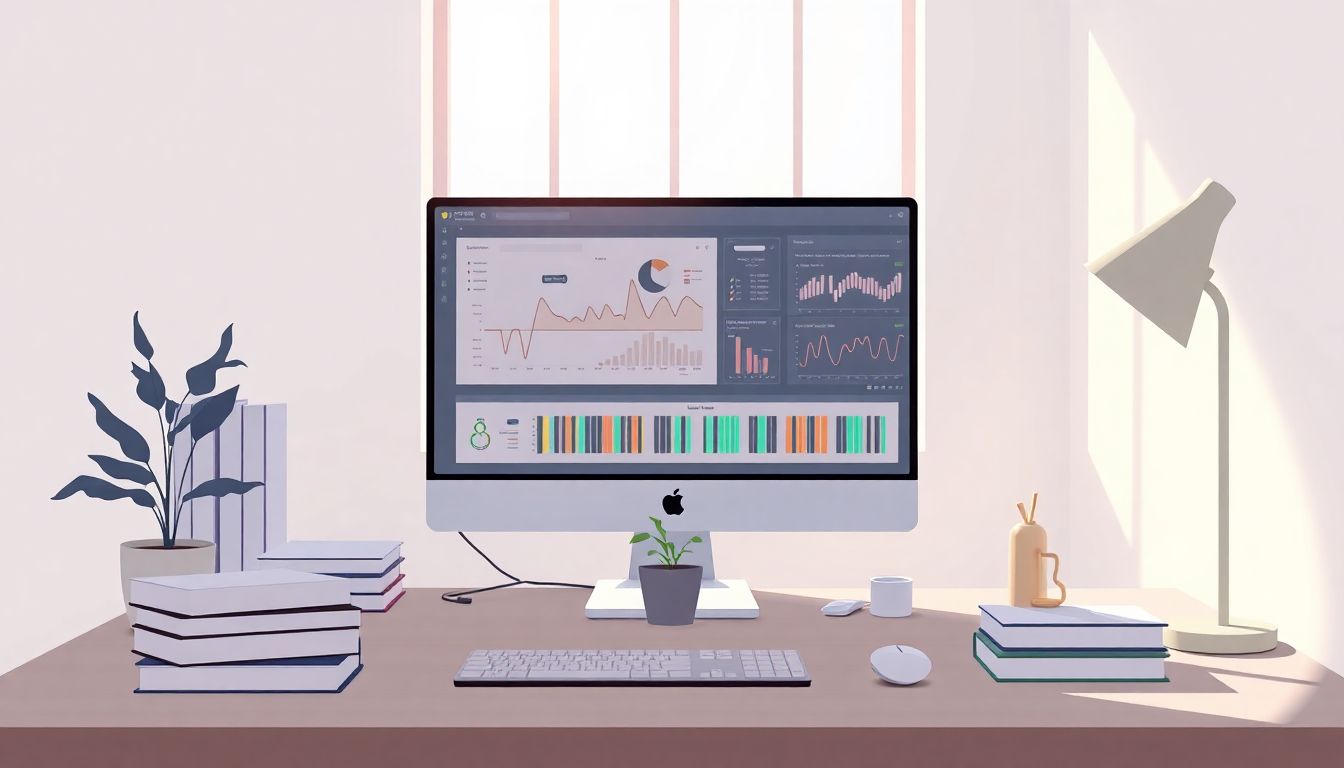Bioinformatics projects can be overwhelming, right? With the massive amounts of data and complex analyses involved, it’s easy to feel lost in the sea of information. You’re not alone if you’re looking for ways to streamline your workflow and make sense of it all.
But what if I told you that harnessing the power of ChatGPT could change your game? Stick around, and I’ll share some fantastic prompts that can help you tackle various aspects of bioinformatics, from data analysis to protein structure prediction—all while making your life a little easier.
We’ll dive into practical tips on using ChatGPT for tasks like gene sequence analysis, creating visualizations, and even exploring case studies of successful projects. Get ready to supercharge your bioinformatics journey!
Key Takeaways
- Bioinformatics projects can be complex; using ChatGPT can simplify your workflow and enhance productivity.
- Prompts for brainstorming research topics include gene expression analysis and machine learning applications in genomics.
- For data analysis, clearly define goals and gather data before using prompts to analyze trends or summarize findings.
- Utilize specific prompts for gene sequence analysis, protein structure prediction, and literature reviews.
- ChatGPT can assist in designing visualizations to make complex data more understandable.
- Workflows for software development should outline necessary features and integration methods for bioinformatics tools.

Top ChatGPT Prompts for Bioinformatics Projects
Using ChatGPT in bioinformatics can streamline various projects, making it a versatile tool for researchers and data scientists alike.
Here are some prompts you can use to jumpstart your bioinformatics projects:
- “Generate a list of potential research topics in bioinformatics related to gene expression analysis.”
- “Outline a workflow for analyzing RNA-Seq data using common bioinformatics tools and techniques.”
- “Provide an overview of machine learning applications in genomics and potential project ideas.”
- “Suggest a set of computational biology tools suitable for analyzing large genomic datasets.”
These prompts can help you brainstorm and develop your bioinformatics projects efficiently.
How to Use ChatGPT for Data Analysis in Bioinformatics
To use ChatGPT for data analysis in bioinformatics, follow these actionable steps.
First, clearly define your analytical goals—what data do you want to analyze and why?
Second, gather your data from relevant sources like genomic databases or lab results.
Next, use the following prompts to engage ChatGPT in analyzing your bioinformatics data:
- “Analyze the following dataset for trends: [insert data].”
- “Explain the statistical methods suitable for analyzing microarray data.”
- “Summarize the findings from a recent study on SNP associations.”
Lastly, interpret the results provided by ChatGPT and consider visualizing them for better insights.
Prompts for Gene Sequence Analysis Using ChatGPT
Gene sequence analysis is crucial in bioinformatics, and ChatGPT can assist in various tasks related to it.
To help you get started, here are several prompts for gene sequence analysis:
- “Perform a sequence alignment for the following DNA sequences: [insert sequences].”
- “Identify and annotate variants in this genomic DNA sequence: [insert sequence].”
- “Discuss the implications of a mutation in the following RNA sequence: [insert RNA sequence].”
These prompts will enable you to leverage ChatGPT’s capabilities effectively in gene sequence analysis.
Efficient Workflows with ChatGPT in Bioinformatics
Creating efficient workflows in bioinformatics can significantly increase your productivity.
Start by mapping out the stages of your project, including data collection, analysis, and interpretation.
Here are workflows prompts to consider:
- “Design a project workflow for analyzing metagenomic data.”
- “Outline steps for automating data preprocessing in bioinformatics.”
- “Suggest tools for creating workflow diagrams for genomics research.”
Implementing these strategies can help optimize your bioinformatics projects for better efficiency and collaboration.

Using ChatGPT for Protein Structure Prediction
Protein structure prediction is a key area in bioinformatics, and ChatGPT can assist significantly in various aspects of this task.
You’ll want to start by defining your specific protein of interest and its sequence.
Once you’re set, consider these prompts to effectively leverage ChatGPT for protein structure prediction:
- “Predict the three-dimensional structure of the following protein sequence: [insert sequence].”
- “Suggest the best methods for predicting protein folding patterns for this sequence: [insert sequence].”
- “Explain the advantages of using homology modeling for protein structure prediction.”
- “Provide a comparison of commonly used protein structure prediction tools.”
Using these prompts can guide your protein structure analysis and enhance your research outcomes.
ChatGPT Prompts for Literature Review in Bioinformatics
Conducting a literature review in bioinformatics can be a daunting task, but ChatGPT can simplify the process with the right prompts.
Start by gathering relevant papers and articles to ensure comprehensive coverage of your topic.
Here are some practical prompts that can help you conduct a thorough literature review:
- “Summarize the key findings of recent research on CRISPR technology and its applications in genetic editing.”
- “List and critique the methodologies used in studies about large-scale transcriptomics.”
- “Create an annotated bibliography of the top five papers in bioinformatics related to protein interaction networks.”
- “Identify gaps in the current literature on bioinformatics tools for genomic data analysis.”
These prompts can help you extract valuable insights and synthesize critical information from various sources.
Creating Visualizations with ChatGPT for Bioinformatics Data
Data visualization is vital for interpreting complex bioinformatics data, and ChatGPT can assist in designing effective visuals.
Start by identifying the type of data you want to visualize, whether it’s genomic sequences, expression levels, or other metrics.
Consider using these prompts to generate visualizations:
- “Suggest visualization techniques for displaying RNA-Seq expression data.”
- “Create a step-by-step guide for making heatmaps from genomic data.”
- “Recommend tools for constructing interactive plots for protein interaction networks.”
- “Explain how to effectively present variant data from genomic studies in a dashboard format.”
Utilizing these prompts can help translate your complex data into understandable visuals.
Prompts for Developing Bioinformatics Software Solutions
When developing bioinformatics software solutions, having clear objectives can streamline the process considerably.
It’s important to define the specific problems your software will solve and the target audience it will serve.
Here are some actionable prompts to guide your software development:
- “Outline the features essential for a bioinformatics tool that analyzes next-gen sequencing data.”
- “Create a basic user interface design for a software application that performs protein folding simulations.”
- “Detail the workflow for integrating machine learning algorithms in bioinformatics software.”
- “List APIs that can be useful for developing a bioinformatics application focusing on genomics.”
These prompts can provide direction and clarity as you work on your bioinformatics software solutions.

Integrating ChatGPT with Bioinformatics Tools
Integrating ChatGPT with existing bioinformatics tools can enhance the functionality and efficiency of your research processes.
Start by evaluating the types of tools you currently use, whether for data management, analysis, or visualization.
Consider the following prompts to facilitate integration:
- “Describe how to connect ChatGPT with a genomic data analysis platform.”
- “Outline steps for developing a plugin that uses ChatGPT for real-time data interpretation.”
- “Explain how to export analysis results from ChatGPT to visualization tools like R or Python.”
- “List examples of successful integrations of AI tools in bioinformatics workflows.”
These prompts can assist in leveraging ChatGPT’s capabilities alongside your current tools, enhancing productivity and insights.
Case Studies: Successful Bioinformatics Projects Using ChatGPT
Learning from case studies can offer valuable insights into successful applications of ChatGPT in bioinformatics.
Here are some prompts to explore notable projects:
- “Summarize a case study where ChatGPT was used for gene expression analysis.”
- “Detail a project that improved data visualization in bioinformatics using ChatGPT.”
- “Describe how ChatGPT contributed to a successful drug discovery project.”
- “Evaluate the outcomes of a research initiative that incorporated ChatGPT for literature reviews.”
These prompts can help you discover effective practices and lessons from real-world applications of ChatGPT in bioinformatics.
Future Trends: ChatGPT in Bioinformatics Research
The future of bioinformatics research looks promising with the integration of advanced AI like ChatGPT.
Think about upcoming trends that might shape the landscape of research and data analysis.
Here are some prompts to stay ahead:
- “Discuss the potential impact of AI advancements on genomic data analysis over the next five years.”
- “Explore how ChatGPT can drive innovations in personalized healthcare solutions.”
- “Predict the role of ChatGPT in automating bioinformatics workflows by 2030.”
- “Identify emerging technologies that may complement ChatGPT in bioinformatics research.”
Engaging with these prompts can keep you informed about the evolving role of AI in bioinformatics.
FAQs
Prompts for gene sequence analysis can include tasks like identifying mutations, comparing sequences, or predicting function. Tailor prompts to include specific gene names or functions to enhance the relevance of the responses.
ChatGPT can summarize key findings, identify trends, and extract relevant references in your literature review. Structuring prompts around specific topics or questions can yield focused and informative results.
Yes, ChatGPT can be integrated with various bioinformatics tools via APIs or custom scripts. This integration can facilitate data analysis, automate tasks, and enhance user interaction in bioinformatics workflows.
Future trends may include leveraging ChatGPT for advanced data interpretation, enhanced predictive modeling, and greater collaboration tools. Increased accuracy and more tailored functionality could improve research outcomes significantly.
